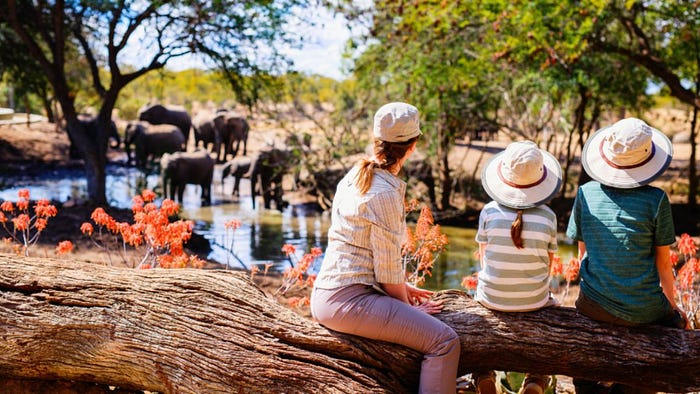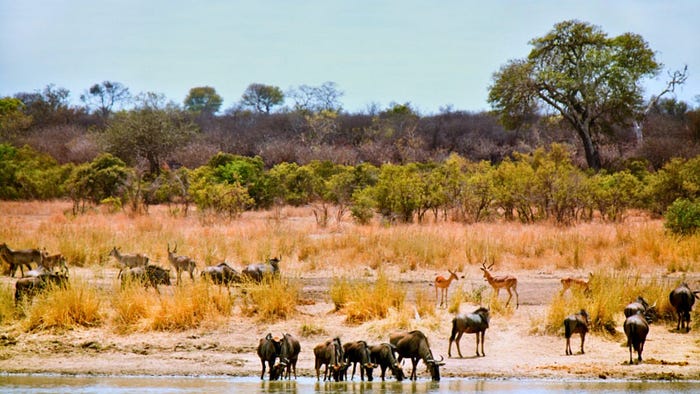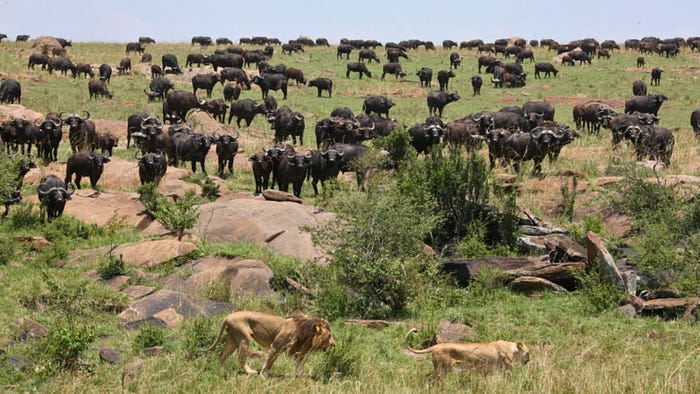Safari Africa Experience: Best Time of Year to Visit Different Regions
Safari Africa Experience:
Best Time of Year to Visit Different Regions
Safari Africa Experience
Planning a Safari in Africa starts with one key question: When is the right time to go? Many travelers consider weather shifts, seasonal wildlife movements, and unique events like the Great Migration when choosing their travel dates. Some wonder whether their trip will coincide with rain or if iconic wildlife events will still be active. Timing plays an essential role in shaping a memorable safari.

At Dorian Destinations, we recognize that each Safari Africa experience reflects a personal dream. We thoughtfully design every itinerary to align with your interests — whether you’re drawn to the Big Five, fascinated by the Great Migration, or eager to explore Africa’s breathtaking terrain. By matching your travel goals with seasonal highlights, we help create journeys filled with lasting impressions.
Ready to Plan Your Safari Africa Experience?
Call Dorian Destinations at (305) 440–9200 Today!
(305) 440–9200
Understanding Africa’s Seasonal Patterns
Africa’s geographical diversity means the seasons vary across regions. Southern Africa generally experiences its rainy season from November through March and its dry season from June to October, ideal for clear wildlife sightings. In East Africa, two rainy seasons (March–May and October–November) alternate with two drier periods (June–September and December–February). Timing can vary slightly by country and region.
East Africa: Kenya and Tanzania
The Great Migration Season (July to October)
The world-renowned Great Migration takes place in Kenya’s Masai Mara and Tanzania’s Serengeti. Between July and October, over a million wildebeest, joined by large herds of zebras and gazelles, cross the Mara River. This natural cycle draws travelers who want to observe dramatic interactions between predators and prey.
September often features high activity along the river, though scenes unfold from July onward, depending on rainfall. Visitors can expect dry, comfortable weather with cool mornings and warm afternoons — excellent conditions for extended game drives.
Calving Season (January to March)
From January to March, Tanzania’s Southern Serengeti hosts the wildebeest calving season. During this time, an estimated 400,000 wildebeest calves are born in a matter of weeks, attracting predators such as lions and cheetahs. February typically marks the peak. The short grasses provide clear visibility for watching young animals navigate their first days amidst dynamic wildlife activity.
Southern Africa: Botswana, Zimbabwe, and Zambia
Dry Season Wildlife Viewing (May to October)
Botswana’s Okavango Delta offers remarkable seasonal variety. During the dry season, animals gather at reliable water sources, creating rich opportunities for wildlife viewing. August and September are particularly active. Water levels, rising between May and July, support both land-based and mokoro (dugout canoe) explorations, combining scenic diversity with ample wildlife interaction.
Flood Season Magic (March to July)
Between March and July, rainfall from Angola’s highlands slowly flows into the Okavango Delta, with floodwaters beginning to rise in March and typically peaking between June and August. High water levels may last into early September, depending on rainfall in Angola, which feeds the Delta’s annual flood cycle. This annual inundation transforms the delta into a lush wetland ecosystem, supporting a rich variety of wildlife and creating exceptional opportunities for photography.
By June, much of the Delta is navigable by mokoro (dugout canoe), allowing travelers to glide through flooded channels where elephants, red lechwe, and other wildlife wade gracefully through the water, framed by vibrant greenery and soft, shifting light.
South Africa: Year-Round Destination

Winter Wildlife Viewing (May to September)
Winter in South Africa offers crisp, dry weather ideal for game viewing. Animals congregate at water sources, and vegetation becomes sparse, making sightings more accessible. July often brings mild temperatures, with chilly mornings warming to pleasant afternoons. Clear skies and minimal rain enhance conditions for both wildlife photography and nighttime drives.
Summer Green Season (October to April)
South Africa’s summer brings renewed growth and dramatic afternoon storms. Many antelope species, including impala, typically give birth from November to January, though the timing can vary by species and location, with some births occurring slightly earlier or later. This results in vibrant scenes of young wildlife set against verdant landscapes. From December to February, afternoon thunderstorms are common — especially in areas like Kruger National Park — adding dramatic contrast to lush, green backdrops.
Namibia: Desert Safari Adventures
Cool Dry Season (May to October)
Namibia offers a distinct desert safari experience, especially in the Namib Desert and Etosha National Park. May through October brings cooler days and chilly nights, perfect for exploration. Etosha’s permanent waterholes attract high concentrations of wildlife during this time, especially August–October. September stands out for balanced temperatures and clear skies — ideal for both wildlife observation and stargazing in remote locations with minimal light pollution.
Hot Season Challenges (November to April)
The warmer months require early morning activities and midday rest. Occasional desert blooms may follow rare, significant rainfall, though these events are unpredictable and do not occur every year. Dramatic thunderstorms can also develop during this period, especially in the interior.
Temperatures in Etosha can exceed 100°F (38°C) in peak summer, particularly in January and February, while coastal regions remain cooler due to the Atlantic Ocean’s moderating influence. Travelers should plan early morning and late afternoon activities during the hottest months to avoid midday heat. Most animal activity occurs around dawn and dusk, offering a quieter yet visually rewarding experience for well-prepared travelers.
Uganda and Rwanda: Mountain Gorilla Trekking
Dry Seasons (June to September and December to February)
The dry seasons offer the best conditions for mountain gorilla trekking in Uganda’s Bwindi Impenetrable Forest and Rwanda’s Volcanoes National Park. Trails are less muddy and easier to navigate, and photography is more manageable in clearer weather. August typically offers favorable trekking conditions and comfortable temperatures, making it a popular time to visit.
Rainy Season Advantages (March to May and October to November)
Trails can be muddy and slippery, making trekking more strenuous, but sightings remain good and visitor numbers are lower. April is one of the wettest months, so proper gear is essential. However, this season offers lush landscapes and the potential for intimate gorilla encounters.
What to Consider When Planning Your Safari Africa Experience
Wildlife Highlights
- Big Five: Lions, leopards, elephants, buffalo, and rhinos are typically easier to spot in the dry season.
- Great Migration: Time your trip for July–September in East Africa for the river crossings.
- Birdwatching: Visit during the wet season for the best birdlife.
Weather and Comfort
- Dry Season: Cooler, less rain, and fewer insects.
- Wet Season: Hotter, more rain, and more insects, but beautiful scenery.
Crowds and Rates
- Peak Season: Dry months (June–October) mean more tourists and higher prices.
- Shoulder Season: April–May and November–December offer fewer crowds and better deals.
Tips for a Rewarding Safari Africa Experience
- Book Early: Popular lodges fill up fast during peak months. Reserve your spot well in advance.
- Pack Smart: Layer for cool mornings and evenings, and wear light, breathable clothes by day. Don’t forget a hat, sunscreen, and insect repellent.
- Camera Ready: Dry season offers the best light for photography, but wet season gives you dramatic green backgrounds and baby animals.
Frequently Asked Questions
- What Is the Driest Month for the Safari Africa Experience?
August is among the driest months in many safari regions, but the exact timing can vary — some areas like Namibia or northern Kenya may experience peak dryness in July or September. August falls within the peak dry season when rainfall reaches its lowest levels and wildlife viewing conditions become optimal.
- Can I See Baby Animals During My Safari Africa Experience?
Yes, you can see baby animals during your African safari experience by timing your visit during calving and birthing seasons. January through March is prime calving season in Tanzania’s Southern Serengeti and surrounding areas, ideal for witnessing newborn wildebeest and predator interactions, including lion and cheetah activity.
- Is My Safari Africa Experience Better During a Full Moon?
A full moon can enhance your safari experience by improving visibility during night game drives, making it easier to spot nocturnal wildlife. However, the added brightness may reduce stargazing visibility, particularly in areas like Namibia’s NamibRand Reserve, known for dark skies. Note that some nocturnal animals may be less active during a full moon, as increased brightness can make them more vulnerable to predators. The experience depends on your priorities — better nighttime visibility or more vivid star-filled skies.
- How Far in Advance Should I Book My Safari Africa Experience?
You should book your African safari experience 6–12 months in advance for peak season travel. Popular destinations and luxury accommodations fill up quickly during prime wildlife viewing periods like the Great Migration.
- What Clothing Should I Pack for My African Safari Experience?
You should pack moisture-wicking, breathable fabrics in neutral colors (tan, brown, green) to avoid attracting insects or startling wildlife, regardless of season. Layering options are important due to temperature variations, especially in areas like the Kalahari or highlands, where early mornings can be cold before midday temperatures rise.
Choosing the Ideal Season for Your Safari Africa Experience

The timing of your Safari Africa experience shapes everything from the wildlife you encounter to the landscapes you explore. Whether you’re drawn to migratory crossings, calving seasons, or gorilla treks, aligning your visit with Africa’s seasonal patterns enhances every moment.
At Dorian Destinations, we customize each safari to align with regional rhythms and your personal interests. By considering weather trends, animal behaviors, and travel logistics, we help you explore Africa in a way that feels meaningful and immersive.
Start Your Safari Adventure Today
Call Dorian Destinations at (305) 440–9200 Today!
(305) 440–9200
Dorian Destinations
(305) 440–9200
Listen to the Podcast
Our Services
Tours & Services
Destinations
Discover the World with Dorian Destinations
(305) 440–9200

Fill up the form below to start planning your travels with us.
Comments
Post a Comment